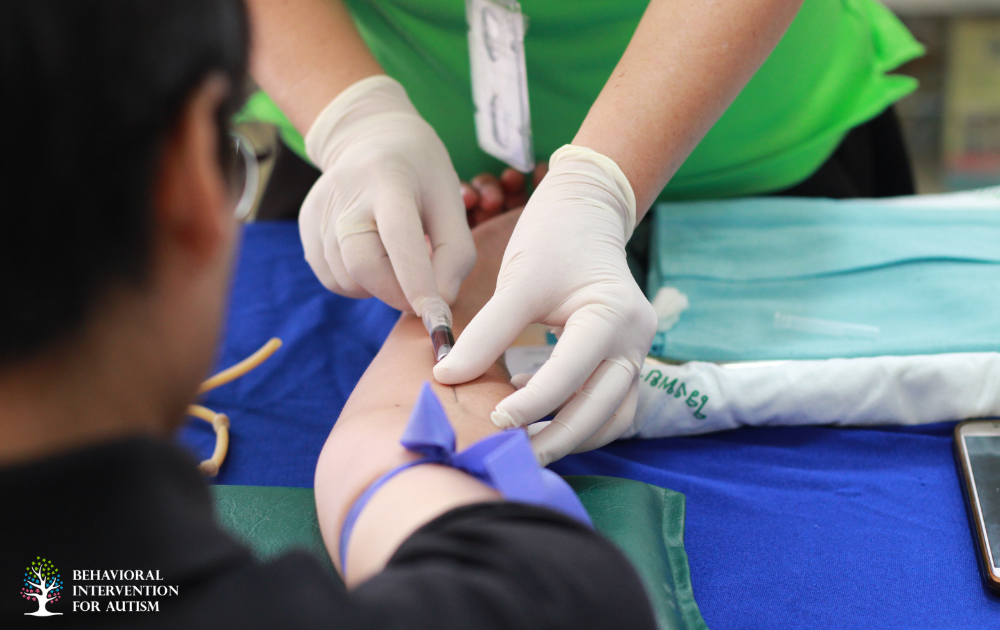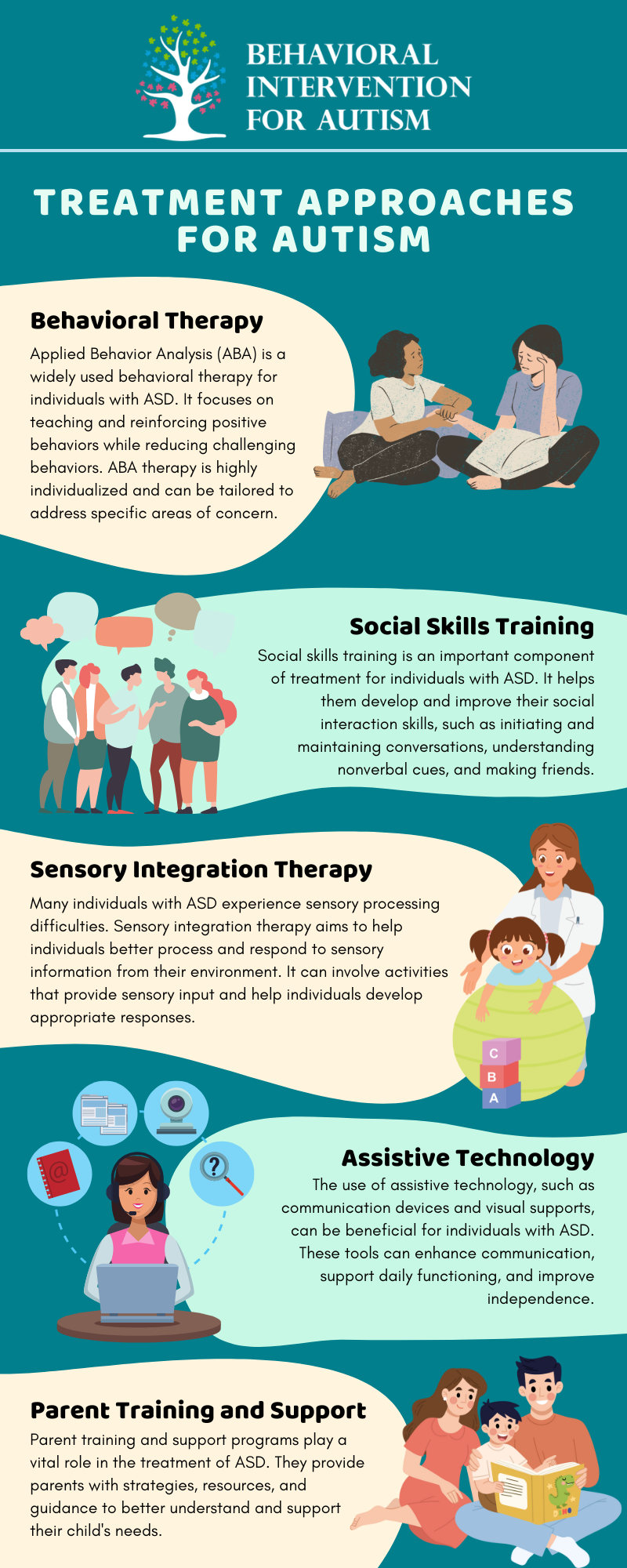
Table of Contents
The term “autism spectrum disorders” (ASD) refers to a group of neurodevelopmental disorders that impact people differently. Disparities in social interaction, behavioral, and communication patterns are characteristics of these disorders.
You might not know it, but ASD actually encompasses several different types, each with its own unique characteristics and levels of severity. That’s what we’re going to look at in this article.
Common Types of Autism Spectrum Disorders
As previously stated, the term Autism Spectrum Disorders (ASD) refers to a group of neurodevelopmental disorders that have diverse effects on people. These kinds of ASDs comprise the following categories:
Autistic Disorder
Autistic disorder, also known as classic autism, is the most well-known type of autism spectrum disorder. It is characterized by significant challenges in social interaction, communication, and behavior.
People who suffer from autism disorder may engage in repetitive behaviors, struggle to communicate both verbally and nonverbally, and become anxious when their surroundings or routines change.
Asperger’s Syndrome
Asperger’s syndrome, although no longer an official diagnosis in the U.S. classification system, was previously recognized as a distinct condition within the autism spectrum.
Individuals with Asperger’s syndrome often exhibit milder symptoms compared to autism. They may have average-to-above-average intelligence, no speech delays, and a keen interest in specific topics.
However, they may still experience challenges in social interaction and communication.
Pervasive Developmental Disorder – NOS
Pervasive Developmental Disorder – Not Otherwise Specified (PDD-NOS) is a term that was used to classify individuals who exhibited some characteristics of autism but did not fit within the strict criteria for autistic disorder or Asperger’s syndrome.
PDD-NOS was often considered a milder form of autism, characterized by challenges in social and language development. However, with the changes introduced by the DSM-5, PDD-NOS is no longer an official diagnosis, as all types of autism are now encompassed within the broader diagnosis of Autism Spectrum Disorder (ASD).
It’s important to note that the DSM-5 merged the different types of autism into a single diagnosis of ASD, eliminating the previous individual categorizations based on differences and intensity of symptoms. This change aims to provide a more comprehensive understanding of autism and acknowledge the wide spectrum of challenges and strengths individuals may experience.
Rare Forms of Autism
While autism spectrum disorders (ASD) encompass a wide range of conditions, there are also rare forms that have distinct characteristics and impact individuals in unique ways.
In this section, we will explore two of these rare forms which are as follows:
Rett Syndrome
Rett syndrome is a rare neurodevelopmental disorder that is typically noticed in infancy. It predominantly affects girls, although it can also be diagnosed in boys, albeit very rarely. It’s caused by a genetic mutation that affects brain development, resulting in severe cognitive and physical impairments.
The symptoms of Rett syndrome can vary, but they often include a loss of purposeful hand skills, a decrease in social engagement, and a regression in language abilities. Individuals with Rett syndrome may experience difficulties with motor coordination, breathing abnormalities, and repetitive hand movements such as wringing or tapping.
It’s important to note that Rett syndrome is a complex disorder that requires specialized care and management. Treatment focuses on addressing specific symptoms and providing support for individuals and their families.
Childhood Disintegrative Disorder
Childhood Disintegrative Disorder (CDD) is another rare neurodevelopmental disorder that is characterized by delayed onset of developmental problems in language, motor skills, or social function. CDD typically occurs after a period of normal development, usually between the ages of 2 and 4 years.
The exact cause of CDD is not yet fully understood, but it is believed to be related to abnormalities in brain structure or function. Boys are more commonly affected by CDD than girls.
The symptoms of CDD involve a significant loss of previously acquired skills and abilities. This includes a decline in language and communication abilities, social withdrawal, loss of motor skills, and a decrease in adaptive behavior. These regressions can be sudden and severe, leading to significant challenges in everyday functioning.
Early diagnosis and intervention are crucial for individuals with CDD. While there is no cure for CDD, treatment focuses on addressing specific symptoms, promoting skill development, and providing support for both the individual and their family.
Diagnosis and Monitoring
Diagnosing and monitoring autism spectrum disorders (ASD) can be a complex process. Certain signs and challenges should be considered to identify and understand ASD properly.
Signs of ASD
Recognizing the signs of ASD is crucial for early intervention and support. Developmental monitoring plays a vital role, where parents, elders, and caregivers should closely observe children’s development to identify any signs of a problem or missing milestones.
This involves paying attention to various aspects of their behavior, communication, social interactions, and play.
In addition to developmental monitoring, developmental screening is another important tool. Professionals use formal questionnaires to assess language skills, motor development, cognitive abilities, behavior, and emotional well-being. This screening helps identify any areas where a child may be experiencing delays or challenges.
It’s important to note that the signs of ASD can vary widely from person to person. Some common signs and behaviors associated with ASD may include:
- Challenges in social interactions and communication skills, such as difficulty maintaining eye contact, limited or repetitive speech, or difficulty understanding nonverbal cues.
- Restricted and repetitive patterns of behavior, such as repetitive movements or interests, adherence to strict routines, or sensory sensitivities.
- Difficulties with flexible thinking and adapting to changes in routines or environments.
- Unusual responses to sensory input, such as being overly sensitive or underreactive to certain sounds, textures, or smells.
If you notice any of these signs or have concerns about your child’s development, it’s important to consult with a healthcare professional or a specialist experienced in diagnosing and treating ASD.
Diagnostic Challenges
Diagnosing ASD can be challenging due to the absence of a specific medical test, like a blood test, to confirm its presence. Diagnosis is typically based on a child’s developmental history, behavior, and observations made by parents, caregivers, and professionals.
While ASD can sometimes be recognized in children as early as 18 months, in many cases, the diagnosis may only be made in adulthood.
Comprehensive examinations and assessments carried out by a multidisciplinary team, comprising psychologists, developmental pediatricians, occupational therapists, and speech-language pathologists, are frequently part of the diagnostic process. To assist them in diagnosing ASD, these specialists refer to the Diagnostic and Statistical Manual of Mental Disorders (DSM-5) which contains standardized criteria.
It’s important to remember that the diagnostic process is not a one-size-fits-all approach. Each individual’s journey to diagnosis may differ, and it requires careful consideration of their unique strengths, challenges, and developmental history.
Treatment and Management
Treatment and management strategies are normally tailored to an individual’s specific needs and symptoms. While there is no cure for ASD, various approaches can help individuals with autism lead fulfilling lives and reach their full potential.
There are two key aspects of treatment and management which are the following:
Individualized Approaches
The treatment of ASD typically involves a multidisciplinary approach, combining different therapies and interventions to address the unique needs of each individual. Some common treatment approaches for ASD include:
Coping with ASD Challenges
Living with ASD can present various challenges for individuals and their families. It is important to develop coping mechanisms and strategies to navigate these challenges effectively.
Some key aspects of coping with ASD challenges include:
- Cognitive-Behavioral Therapy (CBT) – CBT can be helpful for individuals with ASD who experience anxiety or other mental health challenges. It focuses on identifying and modifying negative thought patterns and behaviors, helping individuals better manage their emotions and cope with stress.
- Medication – In some cases, medication may be prescribed to manage specific symptoms or co-occurring conditions, such as attention deficit hyperactivity disorder (ADHD) or anxiety. Medication should always be used under the guidance of a healthcare professional.
- Early Intervention – Early intervention is crucial in the treatment of ASD. Research has shown that starting interventions as early as possible can lead to better outcomes in terms of communication, social skills, and overall development.
By utilizing individualized approaches and developing effective coping strategies, individuals with ASD can navigate the challenges they face and thrive in their daily lives.
At this point, it is important to work closely with healthcare professionals, therapists, and support networks to create a comprehensive treatment and management plan that meets the unique needs of each individual with ASD.
Sources:
https://www.webmd.com/brain/autism/autism-spectrum-disorders
https://www.integrityinc.org/what-are-the-5-types-of-autism
https://www.medicinenet.com/what_are_the_5_different_types_of_autism/article.htm
https://www.healthline.com/health/types-of-autism
- 9 Common Obsessions of Children With Autism You Should Know - February 25, 2025
- What is Neurodiversity? A Guide to Embracing Differences - February 25, 2025
- Understanding Hyperfocus in Autism: What It Means and Why It Happens - February 25, 2025





